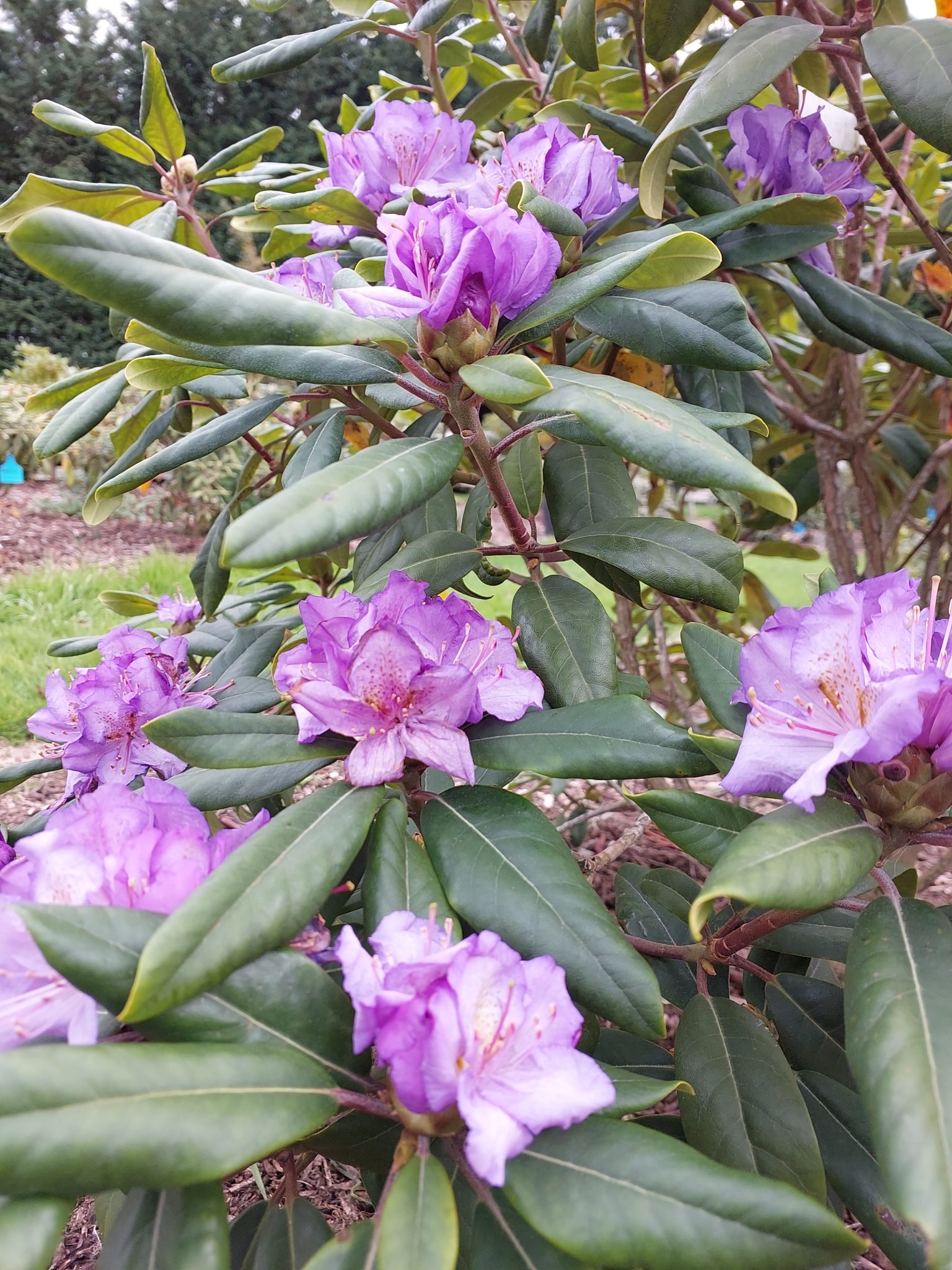Transplanting Rhododendrons:
When and How to Do It
Rhododendrons are popular evergreen shrubs known for their vibrant colours that can enhance any garden during spring. However, to ensure their continuous growth and beauty, these shrubs may need to be transplanted or moved from time to time. Many customers have inquired about the best time and proper technique for transplanting rhododendrons. In this article, we will outline simple steps to guide you, along with a helpful planting YouTube clip.
When to Transplant Rhododendrons: The ideal time to transplant rhododendrons is autumn, although early winter is also suitable. During these seasons, the plants experience less stress since they have passed the heat of summer, and regular rainfall helps keep the soil moist. As rhododendrons have a shallow root structure you do not have to dig too deep, as their roots are wider rather than deeper.
How to Transplant Rhododendrons:
Selecting a new site: Choose a location with well-draining soil and partial shade. Keep in mind that yellow, orange and apricot rhododendrons require dappled shade and protection from the intense afternoon summer sun due to their softer leaf structure.
Digging the hole: Prior to removing the rhododendron from its current location, dig a hole that is twice as wide as the root ball. Store the excess soil in a wheel barrow and mix it with peat or soil conditioner for use as the back fill. The rationale for mixing the two soils together is that it encourages the roots to push through the existing soil structure.
Removing the plant: carefully dig around the rhododendron, attempting to lift as much of he root ball as possible. Once the plant is free, transfer it to the wheel barrow and transport it to its new destination.
Planting in the new location: Reposition the rhododendron in the new hole and back fill it using the soi from the wheelbarrow. Sprinkle a light amount of slow-release acidic rhododendron fertiliser on the surface around the drip line of the plant, and water it thoroughly. Mulch over the pre dug area to discourage weeds, and to assist in insulating the root ball in winter and keeping the moisture in the soil during the summer.
Additional Tips:
Moving large rhododendrons: In some cases, large rhododendrons can be successfully moved using equipment such as tractor buckets and or diggers. This method proved effective for many individuals relocating the cherished rhododendrons after the Canterbury earthquakes.
Minimizing stress on the plant: Consider using an antifungal root drench to eliminate undesirable fungi and stimulate beneficial fungi in the soil, particularly if you have moved the plant from a damp position. Consider feeding your plant a fortnight before transplanting with a with a foliar feed to supplement, as this gives the plant extra energy and does not disrupt the established fertilising program. You can also give the plant a foliar feed straight after planting as well, any excess can be poured onto the root ball to stimulate root growth.
Transplanting rhododendrons may seem challenging, but by following the proper steps and guidelines, you can ensure the success and continued vitality of these hardy beautiful shrubs in their new location. Remember to perform the transplant during the dormant season and adhere to the planting instructions to give your rhododendron the best chance of thriving.
Rhododendrons love to be moved around your garden.
Why are My Rhododendrons Flowering Out of Season?
Rhododendrons are known for their beautiful blooms in spring, but what happens when they start flowering out of season? While this may seem unusual, it can actually happen for a number of reasons.
This is predominantly due to the current weather patterns. As we are still in an El Nina, this has affected the temperatures and the type of weather we have been having, which also affects the plants. For example, we have had really hot weather over summer here in Christchurch, then we had a period of 3 days where it was below 10 degrees, and then we are back to 20 degree days. Our blue dawn rhododendrons have put on a beautiful show of flowers for autumn as they were tricked into thinking that they had experienced winter.
In addition to weather patterns, other factors that can cause rhododendrons to flower out of season including changes in light levels.
So, if your rhododendrons are flowering out of season, should you be worried? The answer is no. In fact, some rhododendron varieties, such as the Black Sport rhododendron, are known to flower twice a year in the nursery, one in March and the other in late November. Even though the rhododendrons have chosen to flower in autumn, they will still often produce flowers in late October and November.
If your rhododendrons have already flowered out of season, it is important to deadhead them like normal. However, you should avoid pruning them as we head into winter, as any new growth could be destroyed by upcoming frosts.
To help your rhododendrons through this next period of growth, it is a good idea to give them a little bit of fertiliser. This can help them cope with any adverse weather conditions that they may face. Rhododendrons require a slow-release acidic fertiliser that contains magnesium and iron, and small amounts of fertiliser is more beneficial for the plant than large annual applications. Here at Rhododirect, we recommend dividing the suggested amount of fertiliser by three and applying a third just before flowering, a third just after flowering, and the last third in March. This reduces the risk of fertiliser burn occurring on the plants from applying too much fertiliser.
Regular watering is crucial to ensure that the fertiliser is being released evenly into the soil to feed the plants. Coming into winter no as important as in the summer months.
While it may be surprising to see your rhododendrons flowering out of season, it's not necessarily a cause for concern. By understanding the reasons why this can happen and taking appropriate steps to care for your plants, you can ensure that your rhododendrons continue to thrive and provide you with beautiful blooms for years to come.


